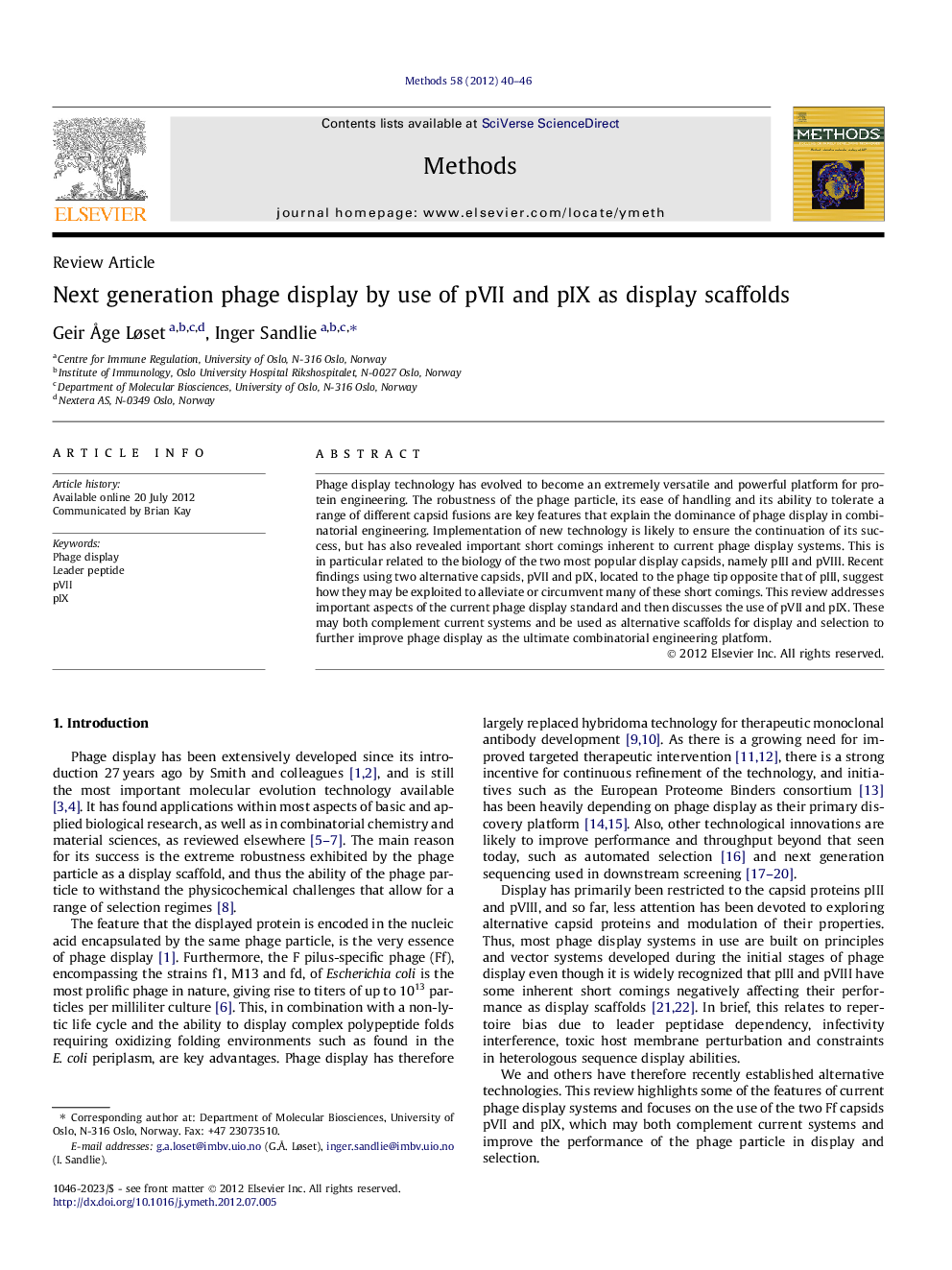| Article ID | Journal | Published Year | Pages | File Type |
|---|---|---|---|---|
| 10825990 | Methods | 2012 | 7 Pages |
Abstract
Phage display technology has evolved to become an extremely versatile and powerful platform for protein engineering. The robustness of the phage particle, its ease of handling and its ability to tolerate a range of different capsid fusions are key features that explain the dominance of phage display in combinatorial engineering. Implementation of new technology is likely to ensure the continuation of its success, but has also revealed important short comings inherent to current phage display systems. This is in particular related to the biology of the two most popular display capsids, namely pIII and pVIII. Recent findings using two alternative capsids, pVII and pIX, located to the phage tip opposite that of pIII, suggest how they may be exploited to alleviate or circumvent many of these short comings. This review addresses important aspects of the current phage display standard and then discusses the use of pVII and pIX. These may both complement current systems and be used as alternative scaffolds for display and selection to further improve phage display as the ultimate combinatorial engineering platform.
Keywords
Related Topics
Life Sciences
Biochemistry, Genetics and Molecular Biology
Biochemistry
Authors
Geir Ã
ge Løset, Inger Sandlie,
